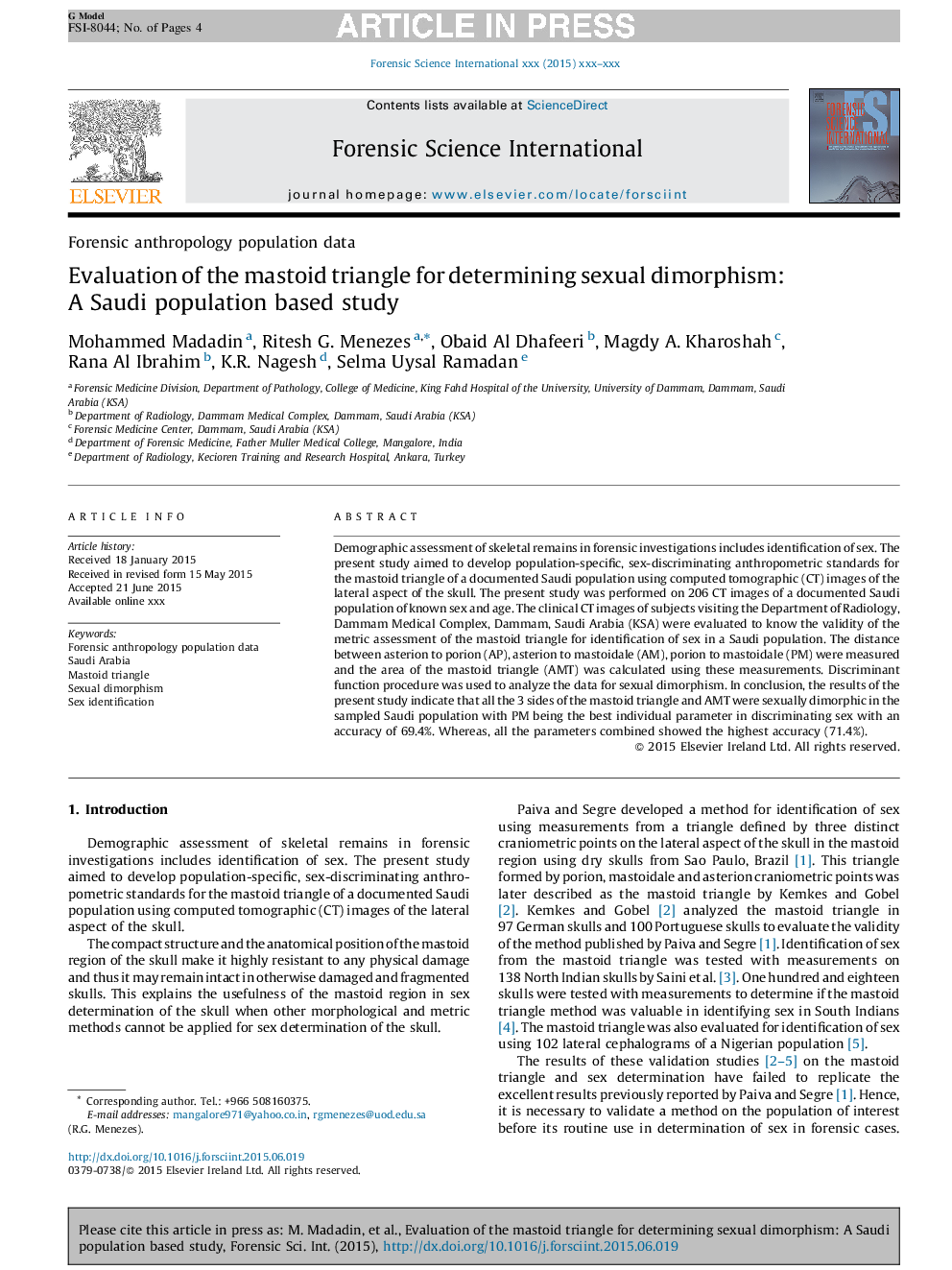| Article ID | Journal | Published Year | Pages | File Type |
|---|---|---|---|---|
| 95352 | Forensic Science International | 2015 | 4 Pages |
Abstract
Demographic assessment of skeletal remains in forensic investigations includes identification of sex. The present study aimed to develop population-specific, sex-discriminating anthropometric standards for the mastoid triangle of a documented Saudi population using computed tomographic (CT) images of the lateral aspect of the skull. The present study was performed on 206 CT images of a documented Saudi population of known sex and age. The clinical CT images of subjects visiting the Department of Radiology, Dammam Medical Complex, Dammam, Saudi Arabia (KSA) were evaluated to know the validity of the metric assessment of the mastoid triangle for identification of sex in a Saudi population. The distance between asterion to porion (AP), asterion to mastoidale (AM), porion to mastoidale (PM) were measured and the area of the mastoid triangle (AMT) was calculated using these measurements. Discriminant function procedure was used to analyze the data for sexual dimorphism. In conclusion, the results of the present study indicate that all the 3 sides of the mastoid triangle and AMT were sexually dimorphic in the sampled Saudi population with PM being the best individual parameter in discriminating sex with an accuracy of 69.4%. Whereas, all the parameters combined showed the highest accuracy (71.4%).
Related Topics
Physical Sciences and Engineering
Chemistry
Analytical Chemistry
Authors
Mohammed Madadin, Ritesh G. Menezes, Obaid Al Dhafeeri, Magdy A. Kharoshah, Rana Al Ibrahim, K.R. Nagesh, Selma Uysal Ramadan,
